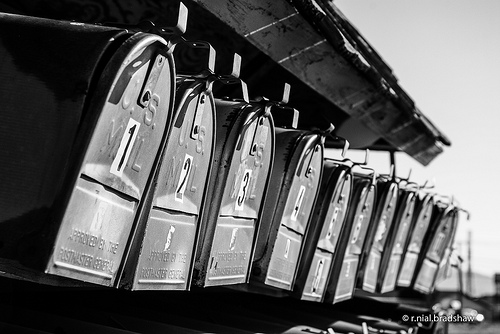Mailing books is just one of the many jobs that keeps our publisher’s assistants busy. So what else, exactly, does a publisher’s assistant at Ooligan Press do? We take care of a variety of tasks that vary almost daily, but put simply: we make sure the press runs like a well-oiled machine.
From taking minutes at executive and manager meetings to managing email to tabling at press events, the publisher’s assistants are here to make sure things get done, keep the lines of communication clear, and present a positive face to the public. We mail out books almost every day, whether we’re sending galleys to our authors, advanced reading copies (known in the industry as “ARCs”) to reviewers, desk copies to teachers, or filling orders for bookstores and Ooligan’s loyal community of readers. One of the seemingly less exciting aspects of our job is to make sure the press workroom is well-stocked on shipping supplies, our inventory of books stays up to date, and the staff is well-informed on shipping procedures—after all, the publishing houses we’ll one day be working for will send out lots of books and marketing kits. Ooligan Press is no exception when it comes to having a substantial volume of mail.
One of the first projects Chris took on as a publisher’s assistant was to revamp our mailing procedures to make sure our project teams are all aware of our options when it comes time to sending out galleys, boxes of books, and sales and marketing kits. To help project teams plan their book promotion schedules and budgets, we created a list of mailing do’s and don’ts for the Ooligan team, and we hope it will give our readers insight into the inner mechanics of a working press.
Mailing Do’s and Don’ts:
- Do: Make sure your “to” and “from” addresses are clearly legible and situated properly on the item to be mailed.
- Don’t: Use labels that place the addresses too close together; doing so can result in sorting machinery incorrectly identifying where the mail is going, and it can come back to us instead of going to the recipient.
- Do: Use sufficient bubble wrap and packaging materials to ensure books will not be scuffed or otherwise damaged during shipping.
- Don’t: Leave empty space in the package, as it makes the package easier to crush or pop open, and bookstores have the right of return on damaged books, which can add up for a nonprofit press like Ooligan.
- Do: Write clearly in print or use labels with easily readable fonts.
- Don’t: Write in script or use labels with script fonts. Also refrain from using metallic or reflective inks, as postal machines may have difficulty reading them.
- Do: Make sure you have the correct and complete address for your recipient. Also remember to include a current return address in case the mail can not be delivered for any reason.
- Don’t: Forget to include suite or apartment numbers and the full zip code (including the last four if possible). If you’re sending mail to a college or a business that uses them, try to include the mail code of the recipient (example: a professor in the English department at Portland State University would use the mail code ENG).
Resources to Help with Mailing:

